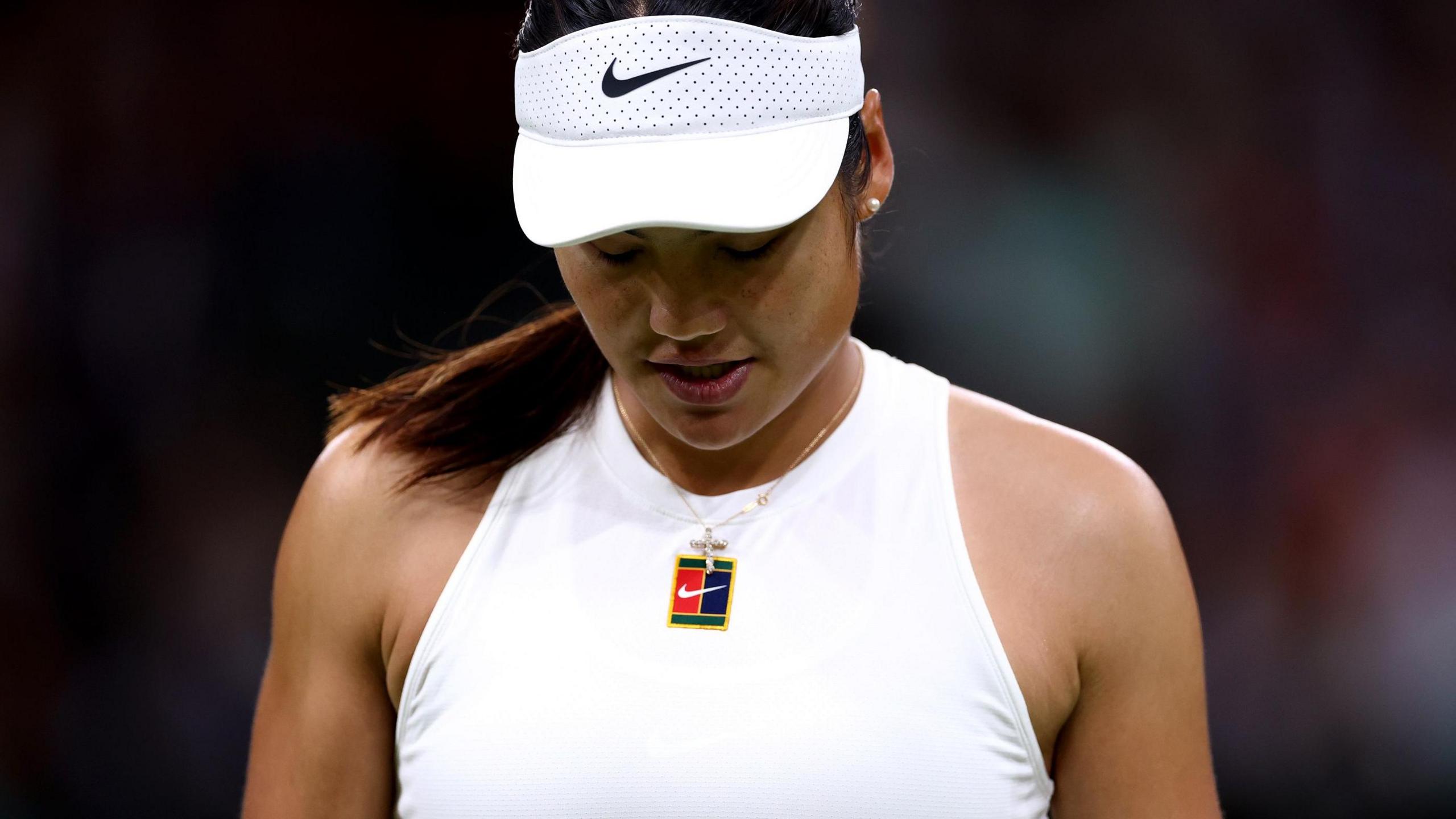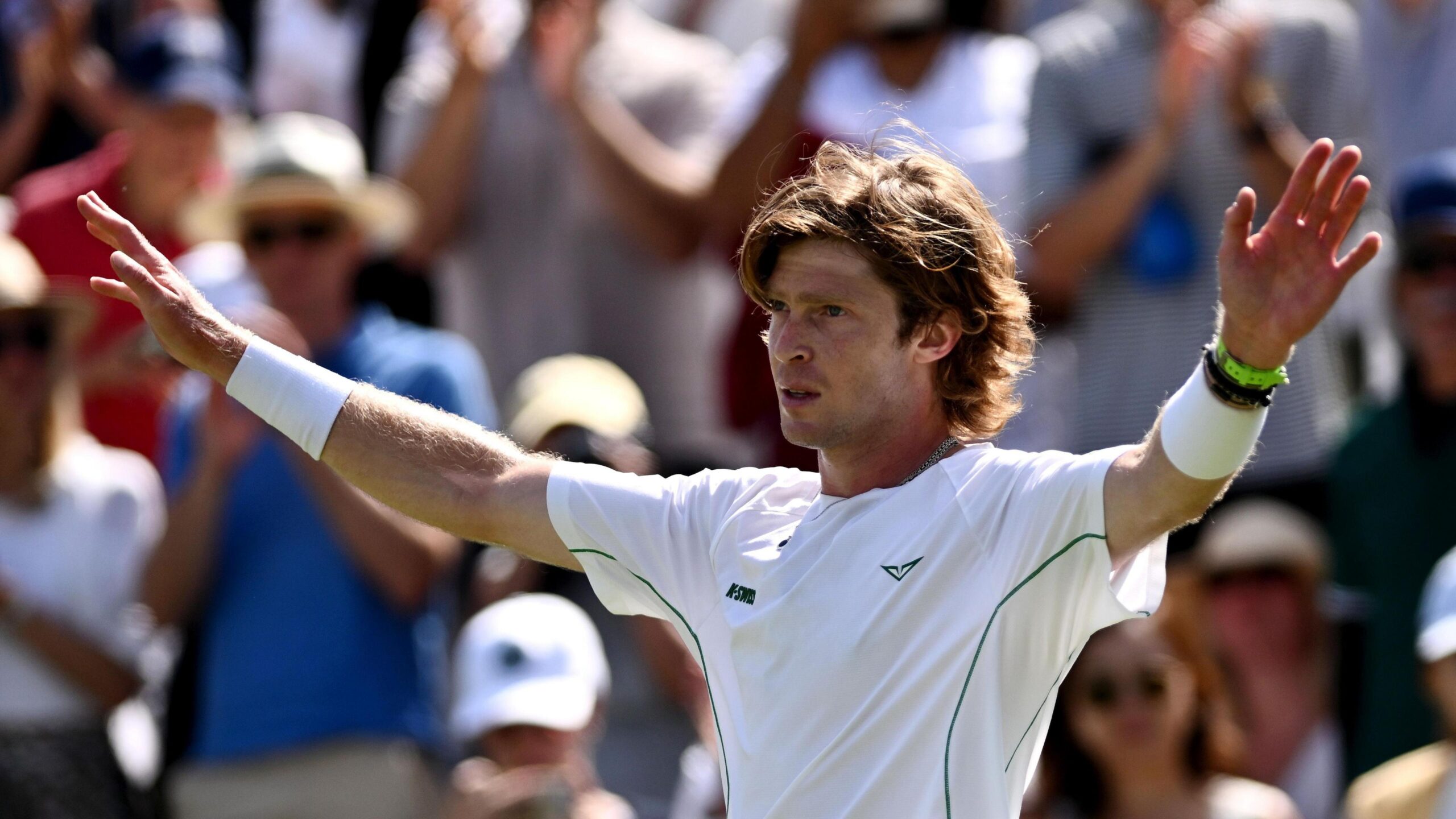To play this video you need to enable JavaScript in your browser.
The sense of disappointment on Emma Raducanu’s face as she exited Centre Court stemmed only from the knowledge that she had gone so close.
The British number one was under no illusion about her task as she stepped out under the roof to a raucous reception before facing the world’s best women’s player, Aryna Sabalenka, on Friday night.
After producing one of her best displays in recent times to sweep aside 2023 champion Marketa Vondrousova in the previous round, Raducanu hit the heights she knew she must attain.
It was not enough on this occasion.
But the two hours which unfolded proved beyond doubt that Raducanu is ready to take the next step on her road back to the top, and begin challenging the biggest names for the biggest prizes.
“It’s hard to take a loss like that. At the same time, I’m playing Aryna, who is a great champion. I have to be proud of my effort today,” reflected a tearful Raducanu.
“It does give me confidence because I think the problem before was that I felt like I was gulfs away from the very top. “
The former US Open champion went toe-to-toe with – and frequently outplayed – a three-time major winner who has held the number one ranking for the past nine months, and reached five finals in the past six Grand Slams she has contested.
In a captivating contest, Raducanu had the best part of 15,000 spectators gripped as she ensured the potential for a major shock never quite disappeared until the very end.
She said it herself before the match: she needs to bridge the gap to the very top.
This was a huge step towards achieving that goal.
Speaking in her on-court interview, Sabalenka said she expects Raducanu to return to the top 10 “soon”.
The Belarusian later added: “She’s fighting. She’s playing much better. She’s more consistent.
The sense that Raducanu could push Sabalenka was not founded solely in her impressive start at the All England Club, but also in her increasingly positive demeanour on the court.
The joy has returned to the 22-year-old’s game, and it is all the more complete for it.
It was evident at the Miami Open in March, where former British number one Mark Petchey first joined her coaching team on an informal basis, as she showed immense fight against Emma Navarro to record only her third win over a top-10 player.
She has praised Petchey’s influence – this week giving him an “11 out of 10” for his work – and said a conversation about their future relationship will take place once “the dust settles” before the start of the hard court swing.
More recently, in her own words, a “free and expressive” Raducanu competed with a near-permanent smile on her face as she joined forces with Katie Boulter in the doubles at Queen’s.
There was another reminder of her new outlook when she raised the microphone to the crowd during her post-match interview on Wednesday, as they serenaded her with encouragement as she discussed the prospect of taking on Sabalenka.
It was clear in the intensity and determination with which she continued to compete despite the setbacks that came against the top seed.
And again when, teary-eyed in her news conference, she joked that her way of dealing with the defeat was to eat a chocolate bar in the locker room.
“It’s going to take me a few days to process. But at the same time it really motivates me,” Raducanu said.
It is the positive manner of her defeat that sets Raducanu up for what comes next in her career.
The qualifier who stunned the world with her triumph in New York four years ago has proven that she thrives on the biggest stages.
She was not overawed by this occasion, carrying the weight of the British number one tag at Wimbledon amid an electric atmosphere, with the crowd eager to celebrate her every success.
She did not shrink when the tough moments inevitably arrived, withstanding seven set points in the first set and showing the resolve to go again in the second, each further proof that she is moving in the right direction.
In the years since her fairytale US Open triumph, she has had wrist and ankle operations, endured injury setbacks, contended with increased expectations and tried to compete despite consistent changes to her coaching set up.
This time last year, she was ranked 135th as she continued to rebuild her career, climbing back from outside the top 300 to return to the top 50.
Ultimately, the next step on her road back to the top of the sport is competing with, and overcoming, opponents like Sabalenka.
Raducanu fell to former world number one Iga Swiatek at both the Australian Open and French Open earlier this year – winning just four games across as many sets – to highlight the gulf that exists.
But this was the acid test of Raducanu 2. 0’s progress – and the results were encouraging.
“I think when I look back at my career, I’m really going to remember that match because you play for those moments, to really be competing toe-to-toe with anyone, but especially with the very best,” Raducanu said.
“I think I did make good progress in the last few months, 100%, with the consistency and the work I’ve been doing.
Related topics
- Tennis













